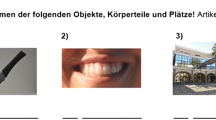Abstract
A key concern in game-based learning is the level of authenticity that the game requires in order to have an accurate match of what the learners can expect in the real world with what they need to learn. In this paper, we show how four challenges to the designer of authentic games have been addressed in a game for an undergraduate course in a medical school. We focus in particular on the system of interaction with different characters of the game, namely, the patients and a number of professionals. Students use their personal phone and email application, as well as various web sites. First, we analyze the authenticity of the game through four attributes, authenticity of the character, of the content of the feedback, of the mode and channel of communication and of the constraints. Second, the perceived authenticity (by students) is analyzed. The later is threefold and defined by an external authenticity (perceived likeness with a real life reference), an internal authenticity (perceived internal coherence of the proposed situations) and a didactical authenticity (perceived relevance with respect to learning goals).
Access this chapter
Tax calculation will be finalised at checkout
Purchases are for personal use only
Preview
Unable to display preview. Download preview PDF.
Similar content being viewed by others
References
Brown, E., Cairns, P.: A grounded investigation of game immersion. Paper presented at the SIGCHI conference on Human factors in computing systems (CHI 2004), pp. 1297–1300. ACM Press, New York (2004)
Adams, E.: Postmodernism and the Three Types of Immersion. Gamasutra (2004) (Last retrieved online in November 2009), http://designersnotebook.com/Columns/063_Postmodernism/063_postmodernism.htm )
Björk, S., Holopaine, J.: Patterns In Game Design, p. 423. Charles River Media (2004)
Ney, M., Balacheff, N.: Learning aware environment: a Laboratorium of epidemiological studies. Paper Presented at the Adaptive Hypermedia Conference, Workshop on Technologies for Mobile and Wireless Adaptive E-learning Environments, Hanover, Germany (2008)
Gonçalves, C., Ney, M., Balacheff, N., Bosson, J.-L.: Student’s Problem Appropriation in an Epidemiology Game. Paper presented at ECGBL 2009, European Conference on Game-Based Learning, Graz, Austria (2009)
Lane, J.L., Slavin, S., Ziv, A.: Simulation in Medical Education: A Review. Simulation & Gaming: An Interdisciplinary Journal 32, 297–314 (2001)
Wajeman, C., Girault, I., d’Ham, C., Ney, M., Sanchez, E.: Analysing experimental design tasks in scientific labwork. Paper presented at ESERA, the European Science Education Research Association, Barcelona, Spain (2005)
Millar, R., Leach, J., Osborne, J.: Improving science education: The contribution of research, pp. 27–47. Open University Press, Buckingham (2001)
Bokken, L., Rethans, J.J., Scherpbier, A.J., van der Vleuten, C.P.: Strengths and weaknesses of simulated and real patients in the teaching of skills to medical students: a review. Simulation in Healthcare 3(3), 161–169 (2008)
Kenny, N.P., Beagan, B.L.: The patient as text: a challenge for problem-based Learning. Medical Education 38, 1071–1079 (2004)
Zary, N., Johnson, G., Boberg, J., Fors, U.G.: Development, implementation and pilot evaluation of a Web-based Virtual Patient Case Simulation environment. Medical Education 21, 6–10 (2006)
Dagger, D., Rogers, C., Wade, V., Gaffney, C., Armstrong, K., Fitzmaurice, B., Gill, M., Walsh, E.: Adaptive Simulations for Communication Skills Training in Healthcare. Paper presented at the 2nd International Workshop on Personalisation for E-Health at the 11th International Conference on User Modelling, Corfu, Greece (2007)
Fitzmaurice, B., Armstrong, K., Carroll, V., Dagger, D., Gill, M.: Virtual interviews for students interacting online for psychiatry (VISIOn): a novel resource for learning clinical interview skills. Psychiatric Bulletin 31, 218–220 (2007)
Lane, C., Rollnick, S.: The use of simulated patients and role-play in communication skills training: A review of the literature. Patient Education and Counselling 67(1), 13–20 (2005)
Moher, T., Uphoff, B., Bhatt, D., Lopez-Silva, B., Malcolm, P.: WallCology: Designing interaction affordances for learner engagement in authentic science inquiry. Paper presented at the ACM CHI 2008 Conference on Human Factors in Computing Systems, pp. 163–172 (2008)
Shapiro, M.A., Pena-Herborn, J., Hancock, J.T.: Realism, imagination and narrative video games. In: Vorderer, P., Bryant, J. (eds.) Playing Video Games: Motives, Responses, and Consequences. Lawrence Erlbaum Associates, Mahwah (2006)
Brousseau, G.: Theory of Didactical Situations in Mathematics. Springer, Netherlands (1997)
de Freitas, S.: Learning in immersive worlds. Bristol. Joint information systems committee (2006) (Last retrieved online in November 2009), http://www.jisc.ac.uk/media/documents/programmes/elearninginnovation/gamingreport_v3.pdf
Busselle, R., Bilandzic, H.: Fictionality and Perceived Realism in Experiencing Stories: A Model of Narrative Comprehension and Engagement. Communication Theory 18, 255–280 (2008)
Author information
Authors and Affiliations
Editor information
Editors and Affiliations
Rights and permissions
Copyright information
© 2010 Springer-Verlag Berlin Heidelberg
About this chapter
Cite this chapter
Ney, M., Gonçalves, C., Blacheff, N., Schwartz, C., Bosson, JL. (2010). Phone, Email and Video Interactions with Characters in an Epidemiology Game: Towards Authenticity. In: Pan, Z., Cheok, A.D., Müller, W., Zhang, X., Wong, K. (eds) Transactions on Edutainment IV. Lecture Notes in Computer Science, vol 6250. Springer, Berlin, Heidelberg. https://doi.org/10.1007/978-3-642-14484-4_20
Download citation
DOI: https://doi.org/10.1007/978-3-642-14484-4_20
Publisher Name: Springer, Berlin, Heidelberg
Print ISBN: 978-3-642-14483-7
Online ISBN: 978-3-642-14484-4
eBook Packages: Computer ScienceComputer Science (R0)




